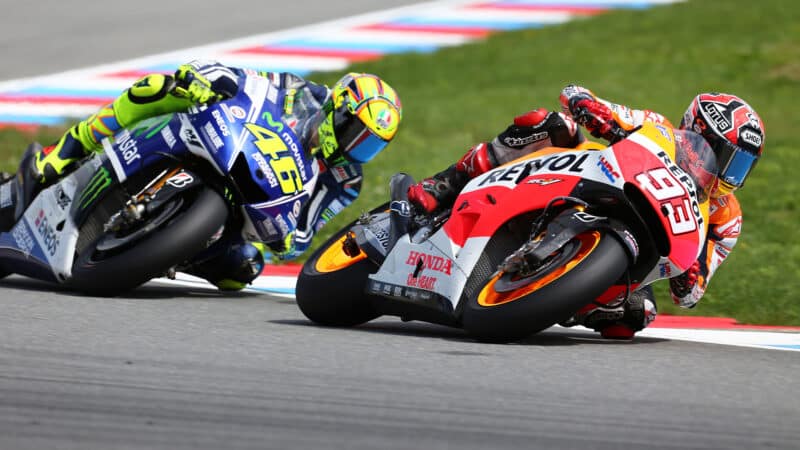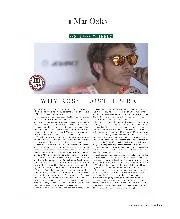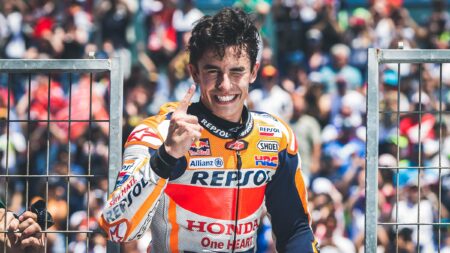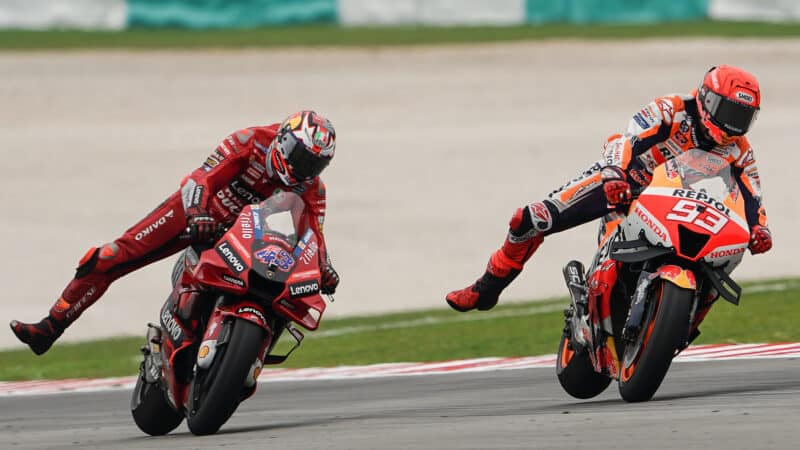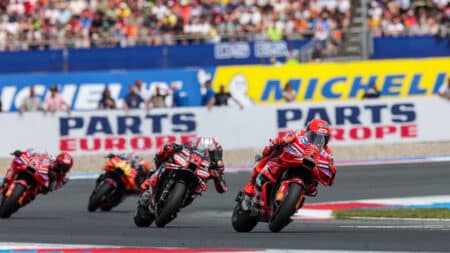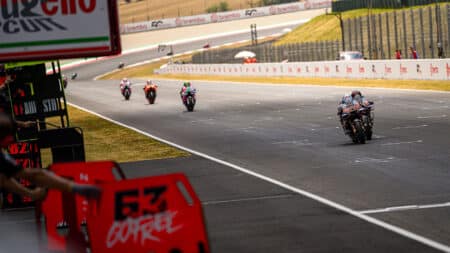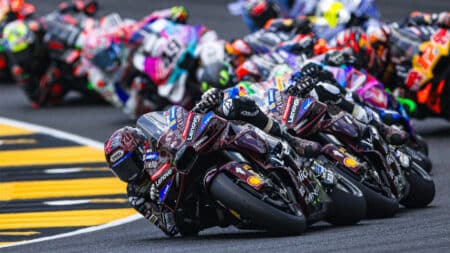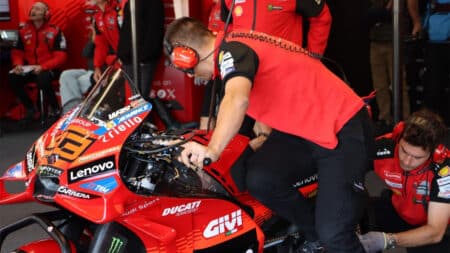Now Márquez hopes to travel in the opposite direction, from wrecking himself and so many Honda RC213Vs to winning again, with a second-hand Desmosedici.
The obvious question is whether the six-time MotoGP champion — who will be 31 years-old when he first races a Ducati, will be able to transfer his skills from the Honda to the Ducati? Personally, I have little doubt he will be in the 2024 title fight.
What we do know is that Márquez doesn’t really like racing with lots of downforce aerodynamics. He prefers riding a motorcycle more freely, teetering on the brink of disaster all the way to the chequered flag, rather than guiding a two-wheeled Formula 1 car around a racetrack as directed by your engineers.
But this is the way now and you must adapt or die.
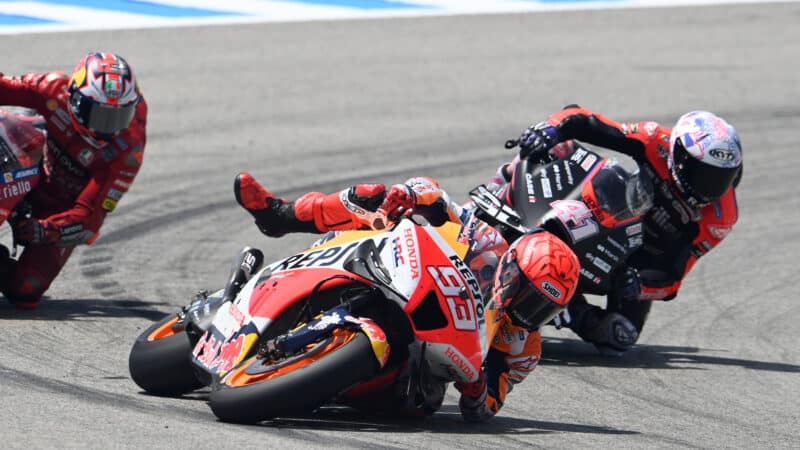
Márquez will need to learn to ride a little less like this on the Ducati
Honda
The Ducati’s greatest advantages are how it stops and how it goes, because the Desmosedici can transfer more torque to the asphalt than any of the other bikes.
When Márquez was in his pomp his killer skill was corner entry: braking hard into the apex, tucking the front tyre and even using that tuck to help turn the bike. Those days seem to be over, because the aero puts so much downforce on the front tyre that once it lets go it’s usually gone.
Márquez won’t only need to get used to a new bike and a new way of riding next year
Therefore you have to make the difference another way. Now it’s all about smashing both brakes, using the rear tyre as much as the front. The Ducati is better than any of the other bikes at allowing its riders to do this, because somehow it doesn’t pitch as much.
Using the rear tyre to stop the bike also means kicking the bike sideways on the brakes, skidding the rear tyre into the corner to take load off the over-stressed front tyre and using its grip to reduce speed until you approach the apex, then gently bringing the bike back into line, but still using the rear to slow and turn the bike as you reach the apex.
Currently Pecco Bagnaia and KTM’s Brad Binder are the kings of this technique, but Márquez is no stranger to sideway corner entries, so it surely won’t take him long to work it out on the Ducati.
Learning the bike’s corner-exit technique shouldn’t be such a big deal, because playing with the rear tyre is always easier than playing with the front.
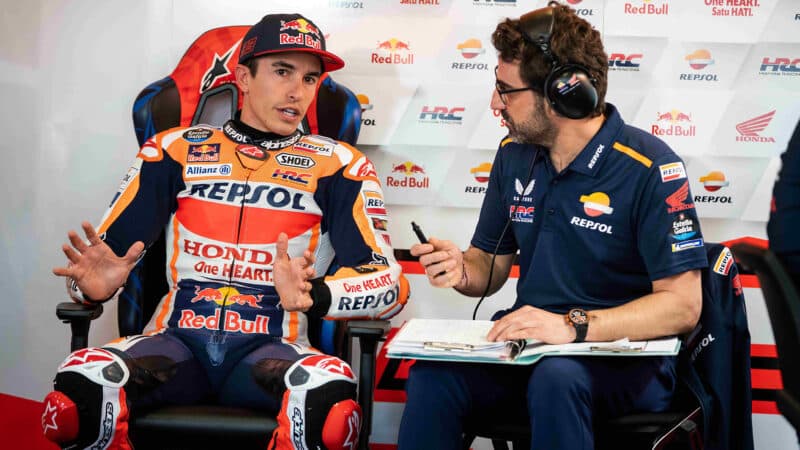
Márquez and crew chief Hernandez will split after 14 years together
Honda
And as Martin says: “The good thing is that you can ride the Ducati in different ways”.
When Márquez rides the Ducati for the first time at Valencia on November 28, he will have access to the data of the company’s other seven riders, including the first three men in the 2023 championship: Bagnaia, Jorge Martin and Marco Bezzecchi. Not just for Valencia, but for every track on this year’s calendar. That will be his winter reading. He will be able to see which lines they take, where they brake, how they brake, where they open the throttle and how they open the throttle.
There’s no doubt that Márquez the elder is more talented than brother Alex, but perhaps we can get a glimpse of how his performance will change from 2023 to 2024 from his younger sibling, who switched from Honda to Ducati this year.
